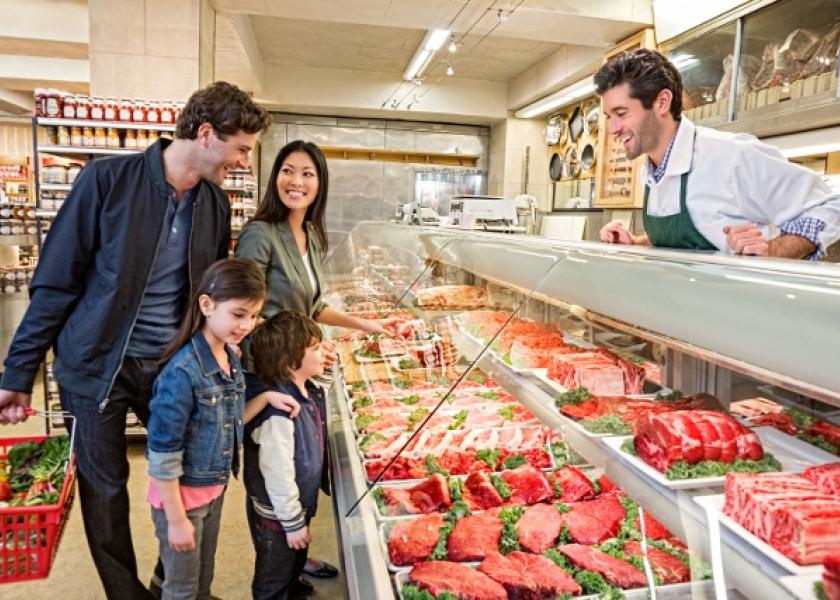18th Annual Power of Meat: Fresh Meat Sales Exceed Pre-Pandemic Levels

Americans are buying more fresh meat than before the COVID-19 pandemic and are seeking value in terms of price, convenience and better-for attributes in meat purchases, according to the 18th annual Power of Meat report released by the Meat Institute and FMI—The Food Industry Association.
Self-described “meat eaters” comprise 78% of Americans, compared to just 7% who describe themselves as vegan or vegetarian. Shoppers spend more than $15 in the meat department per trip and average nearly one trip to the meat department per week (up nearly 5% since 2019). While 50% of shoppers get their meat from a supermarket, many turn to supercenters (35%), club stores (4%) and hard discounters (5%) for their meat purchases.
Despite rising food and beverage prices over the past year, consumers did not significantly change the amount of meat they buy (down just 2.5% by volume compared to 2021). Product quality and appearance continue to be the top factors driving meat purchase decisions, followed by price per pound and total package price.
To save money, a large majority of consumers (76%) report they made changes to the amount, type, cut, and/or brand of meat they purchase or changed where they shop. Consumers’ top strategies to save money include: buying only the amount needed (42%), looking for coupons (35%), and stocking up when meat is on sale (35%). Seventeen percent said they buy less meat with organic, grass-fed, or other claims. Only 16% of meat shoppers said they cook more meatless meals to save money. Of the 33% of Americans who said they are looking to eat less meat or chicken, 52% cite cost as the reason (up from 16% in 2020).
“Meat continues to meet the needs of American families, across a wide range of priorities and preferences,” said Julie Anna Potts, president and CEO of the Meat Institute. “Shoppers count on meat for quality, taste, convenience, and value, and the meat sector is taking action through the Protein PACT to ensure they can feel confident about doing so for generations to come.”
Trends in meat preparation
Americans prepare between four and five dinners (4.6) at home during a typical week, 87% of which (4 per week) contain a portion of meat or poultry. With 55% of Americans using some or mostly semi- or fully-prepared foods in their dinner preparation (compared to 45% who cook mostly from scratch), purchases of pre-marinated, pre-cut or pre-seasoned meat have increased dramatically (73% of shoppers sometimes or frequently bought these products in 2022, up from 60% in 2020).
Trends in meat perceptions and knowledge
In line with overall shopper interest in healthy and nutritious food choices (63%) and in doing their part for the environment (52%), 85% of meat shoppers consider at least one “better-for” attribute when buying meat (better for me/my family, better for animals, better for the planet, better for farmers/workers). Shoppers weighing health and nutrition in their meat and poultry purchases are focused on three areas: portion control, lean percentage and protein variety in the form of seafood.
Just under half (47%) of shoppers believe meat and poultry brands are committed to responsible and ethical sourcing, and 45% say meat and poultry brands are committed to sustainable production.
“The research tells us that we’re seeing a more price-conscious shopper, but we’re also witnessing shoppers seeking ‘simple pleasures’ and that’s one area among others where the meat department can delight,” said Rick Stein, vice president of fresh foods for FMI—The Food Industry Association. “For example, shoppers concerned about food prices might opt to splurge on an at-home date-night meal. Food retailers can best serve today’s shoppers by emphasizing value-added meat options and catering to shoppers with meal solutions.”
The Power of Meat study was conducted by 210 Analytics on behalf of FMI—The Food Industry Association and the Meat Institute’s Foundation for Meat and Poultry Research and Education.
For summary of key findings:







